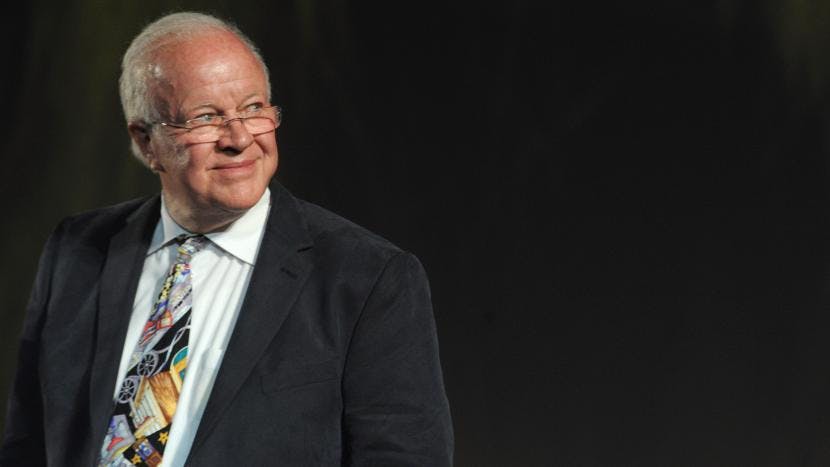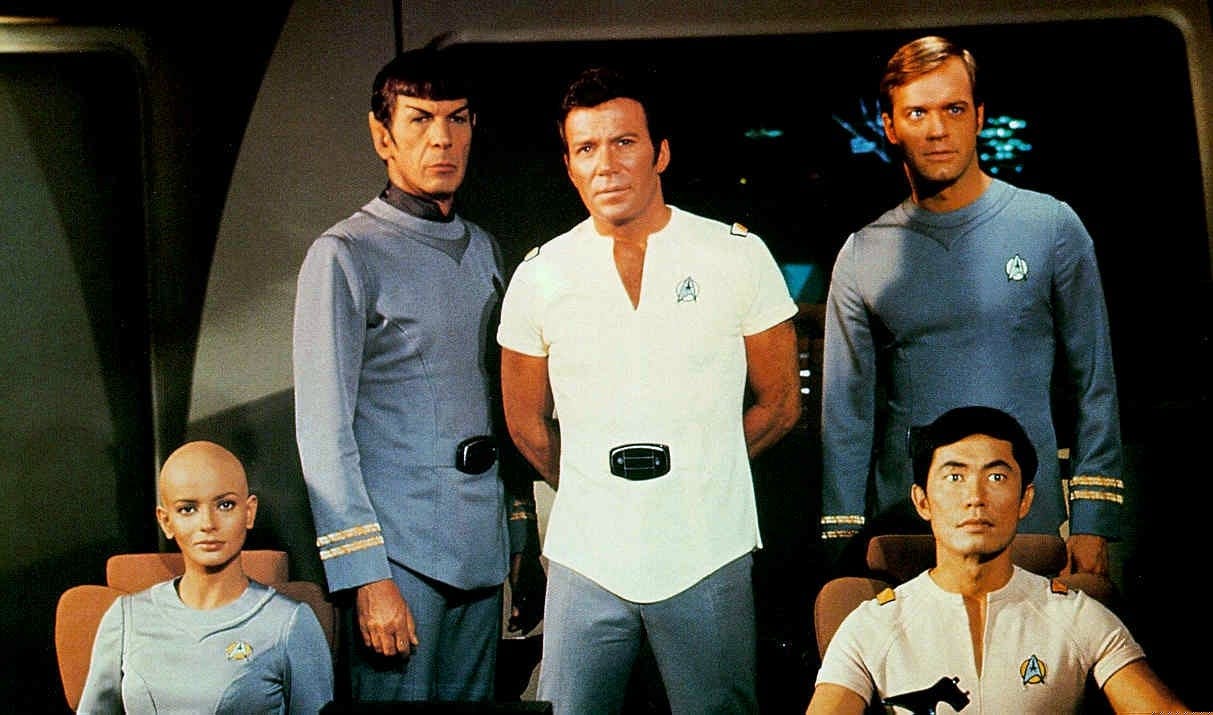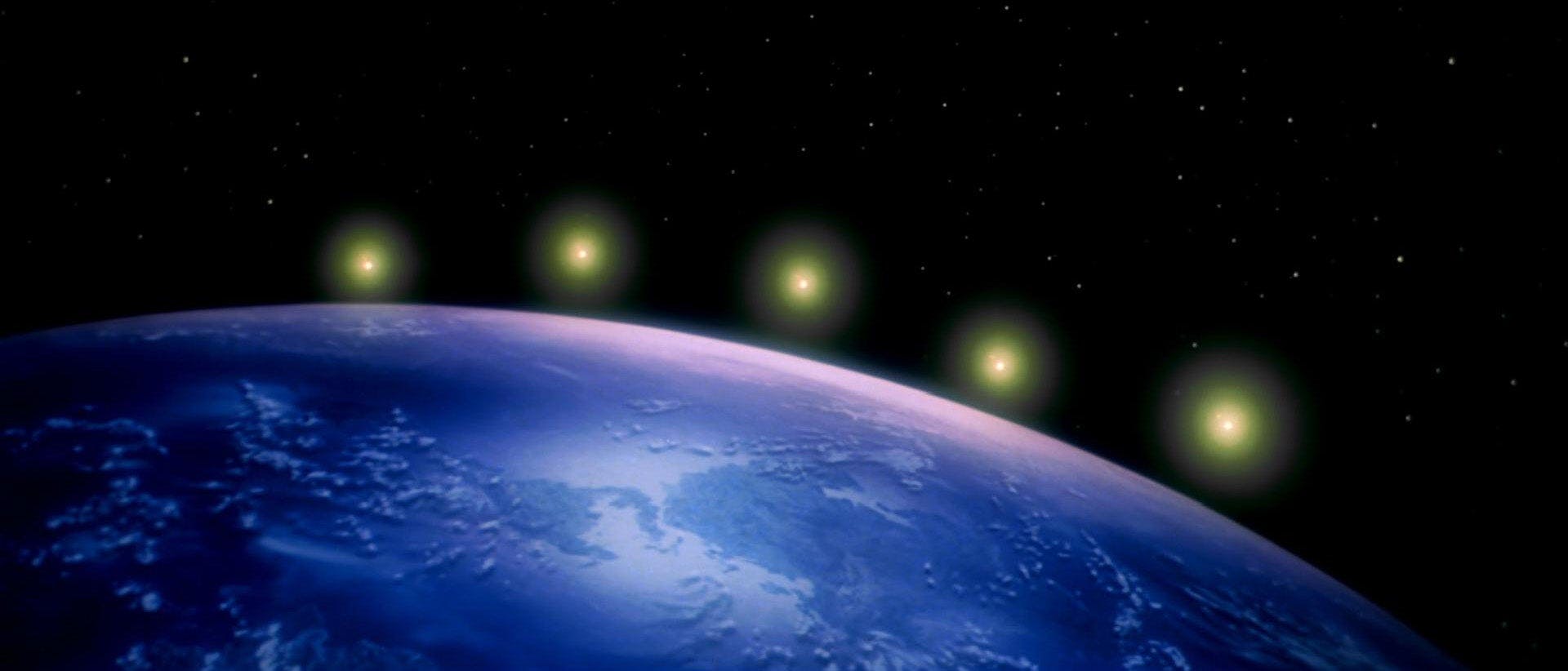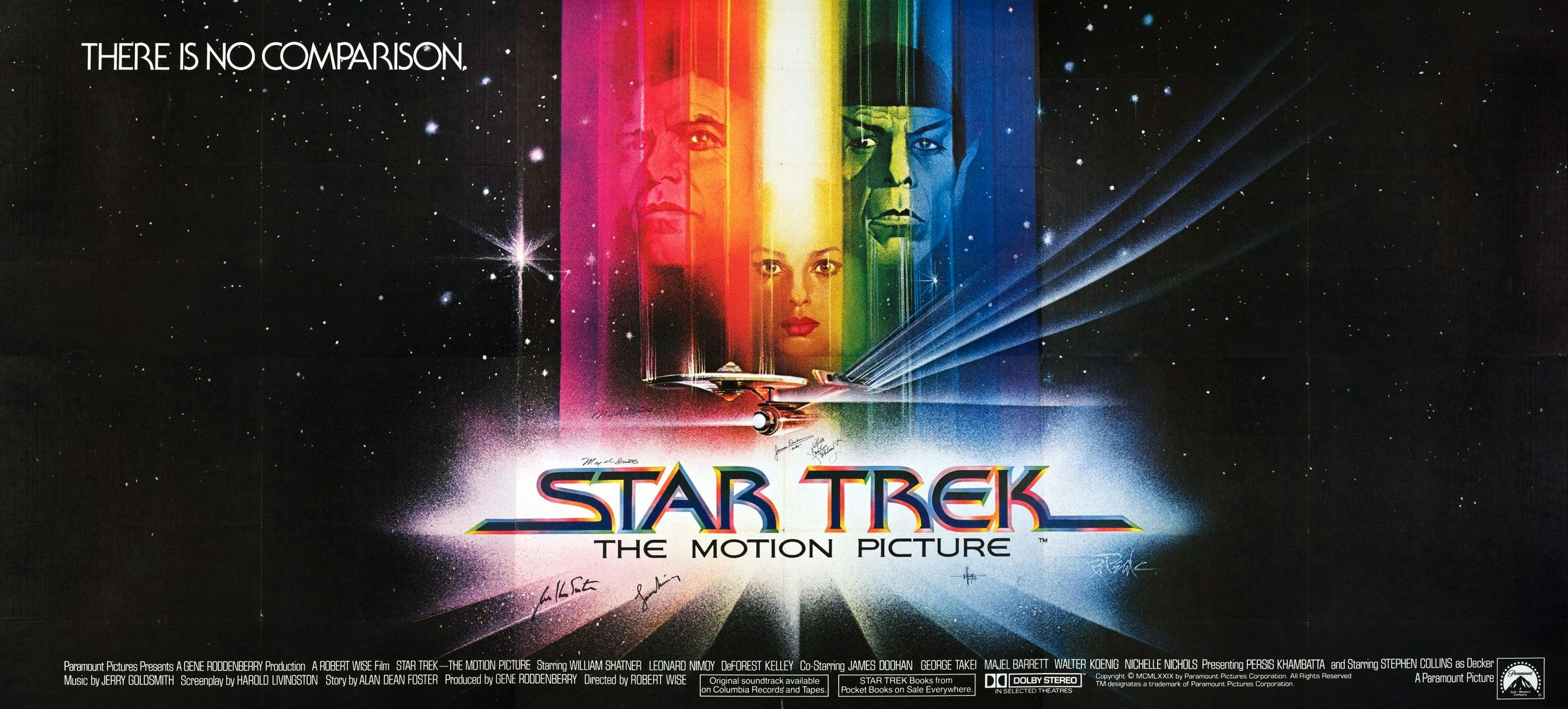Published Sep 12, 2019
In Conversation With Douglas Trumbull
The Motion Picture's FX wizard looks back at his work on the groundbreaking film.

StarTrek.com | Getty Images
This article was originally published on September 12, 2019.
Star Trek is boldly going into the future with a third season of Discovery, the advent of Picard, two upcoming animated shows, and even more on the way. But without Star Trek: The Motion Picture, it’s unlikely any of that – not to mention, TNG, DS9, Voyager, Enterprise, or the TOS and TNG features – would’ve come to pass. The Motion Picture, released in 1979 – 40 years ago this December – wasn’t necessarily perfect, but its special effects delivered a visual feast. Fortunately, director Robert Wise and Paramount Pictures turned to Oscar-nominated special effects wizard Douglas Trumbull and his team, which included John Dykstra and his own father, Donald Trumbull, and let them weave their magic. Together, they helped save the day and perhaps Star Trek itself. Fathom Events will celebrate The Motion Picture’s 40th anniversary by re-releasing the movie in theaters on September 15 and 18, and that gave StarTrek.com the long-awaited opportunity to interview Trumbull, whose other credits include 2001: A Space Odyssey, Silent Running, Close Encounters of the Third Kind, Brainstorm, Blade Runner, and Tree of Life. Trumbull didn’t disappoint, discussing his Trek work and more in extreme detail and with characteristic candor.

StarTrek.com
StarTrek.com: You were at STLV last month, which was your first Trek con in ages. What expectations did you have going in, and how similar or different was the reality of it? Douglas Trumbull: Well, I didn't have any set expectations, although I had been very briefly to a Star Trek convention in New York City 30 years ago, maybe 40 years ago. I think it was at the Waldorf-Astoria, and I just saw it peripherally. I had no idea of the scope and spectacle of the Las Vegas show. It was stunning, spectacular, amazing, and wonderful. [Star Trek fans] are sweet and they kind of live in their alternate universe, but they're optimistic about the future and love science-fiction and love the idea that there's new ideas of how to transform humanity or how to be part of the universe. It's important stuff that they're into in Star Trek. The Motion Picture is about to turn 40. How do you put into context what the film means to people, and its place in not just reviving Trek, but setting the stage for everything that’s followed? DT: The movie, to me, is an attempt at trying to elevate the genre from being seen strictly as an episodic television series to being a big, epic sci-fi (film) spectacle. I think that was achieved, and that was what I was trying to help do. That's what Bob Wise was trying to do and that's what the studio was trying to do. Mission accomplished. And the movie looks better and better to me every time I see it. There's the saying that all's well that ends well, but TMP presented massive challenges, from the time crunch to the VFX to standard conversion issues.DT: I've done this all my life and so there wasn't anything that unusual in that respect. It's just the whole backstory of how troubled the movie was and how it derailed, and I had to fix things up if I could, which I did my best under the circumstances. So, from my perspective, there are some aspects of the movie that didn't quite reach the level of quality I would've sought under normal circumstances. I would’ve improved some of those [FX] shots, but we were out of time and did what we could within the limitations of that. But, like I said, I look back on it now and I like it more and more every time I see it.

StarTrek.com
You and your team had less than a year to realize the FX on TMP. If you had, let's say, a full year, to perfect the FX, how different might the film have looked? DT: It's hard to say. I haven't been asked that particular question, but I’d say that when I come on a project, whatever the project is, I’m right at the very initial space where I can influence the drift of how the live action is going to be shot, so that it's shot appropriately to be commensurate with visual effects. I look at the screenplay and often suggest whole sequences or approaches or looks that could pervade the movie in a particular way. So, if we'd had an extra year on Star Trek and had been in on it from the very beginning, I think there are many things we still would’ve done, but would’ve approached differently. I was not sold on using computer graphics at the time, and that's what Bob Abel's company was trying to do. It was a very brave adventure on their part, but it didn't work. We tried doing the same thing on Close Encounters and it didn't work, and they were very close in time with one another. In order to get TMP done and to do it with what I’d call fairly conventional means, we had to shoot conventionally and do optical printing, miniatures and all the stuff we knew how to do, which we had the crews to do if we’d been able to be more adventurous, I would’ve looked at V'Ger from a completely different standpoint, as an alien being with a different look, a different architectural or design look. A lot of what has been borne out over the years about alien contact, which is the key thing going on in TMP, is that it's a reduction of physicality and increase in energy and consciousness. The serious people in the alien contact world think there are super-luminal, beyond physicality aspects to alien contact. That is something I’d have stressed in the design and configuration of the story and dialogue, and in what the nature of V'Ger ultimately would’ve been. That would’ve been fascinating. DT: There was something about the whole story that bothered me from the very beginning, which was this super-intelligent alien thing, whether it’s a being, a civilization, a culture, or whatever, has just made this idiotic mistake and misinterpreted what V'Ger is. It's the Voyager spacecraft with a couple of missing letters, and that's kind of a dumb idea, I think. I would’ve fixed that from the beginning. I wouldn't have gone down that path because that's like a one-liner joke, in a way, that’s very hard to stretch out over a two hour feature film. There could’ve been a different approach to the misunderstanding that took place with the alien culture who finds the Voyager spacecraft and is looking for its creator. That could’ve been much more deeply and emotionally developed. You directed Leonard Nimoy for the movie’s entirely reconfigured Spock spacewalk sequence. What did Nimoy say about having to redo it? How was he to work with, and did you ever hear his thoughts about the finished sequence? DT: I never had a conversation with him after the fact, but working with him was a joy. He was a totally professional actor and did whatever I asked. He just had a tremendous amount of trust that what I was doing was going to be okay. So, he came to our studio and we shot him in his space outfit and helmet and did everything we could to make him look as good as we possibly could and pull off that sequence with as little effort as possible and get it done in time. There are a couple of minor elements I would've liked to get better or would’ve done differently, but nevertheless, I'm happy with the overall result. Was there a process or a specific effect that you and your team created out of pure adrenaline and necessity on TMP that later became standard? DT: No, I wouldn't say that, but something we developed that transformed into something else was the laser scanning we used to create the wormhole effect. That was like a laser-scanned version of slit scan that I used for 2001, and it created a completely different shape and completely different visual dynamic. Laser scanning didn't ever become part of visual effects in that respect, but it was part of what has become laser digital projection and other technologies that have come since then.

StarTrek.com
The version of TMP that Fathom will present is the one that opened in 1979. How appropriate is it that it's this iteration and not the director's cut or a 4K version? DT: The director's cut and 4K version, these were all basically for the video market. Whether it's a Blu-ray or DVD, the progressive improvements are for video. It's designed to be viewed on a television screen, not on a big movie screen in the theater. It's important for people to understand or begin to understand that when you project a movie in a theater, there's something going on you can't quite describe, that I’d say is cinematic. It relates to the fact it's mechanical. It's sprocketed film, a physical organic emulsion on plastic, and it's being projected with a mechanical projector device that has a shutter in it. So that movie's actually flickering, even though subconsciously you're not aware of the flicker. Movies used to be called “the flicks” because they didn't have double-bladed shutters in the projectors. When they figured that out, they could get rid of the flicker by showing each frame twice. That's how all the movies we've seen for the last 100 years have been shown. We see that as cinematic and no one seems to understand that television and digital projection is not cinematic because there's no shutter. The screen is illuminated 100% of the time.DT: And so when you try to increase the frame rate to get rid of blurring, you start looking very much like video, because we know the difference unconsciously between video and film. What I'm trying to get everybody to understand is it’s the shuttering that makes the difference. That's what we've been doing with the process I've been developing, which is being used on Gemini Man, which is opening [in October]. You directed Silent Running and Brainstorm. Many people wanted you to direct far more often, and they still do. Are you open to doing so? And, either way, what else are you working on at the moment? DT: I'll go back a little bit. The trajectory I was on at the time I worked on TMP was Brainstorm, which was intended to be shot in the Showscan process at 60 frames per second in 70mm and projected that way, and it was quite spectacular. It was owned by Paramount, and sadly Paramount got completely distracted by the problems with Star Trek, and so I got sucked into the vortex of Star Trek's problems and had to set aside my whole development of Brainstorm and Showscan, because Brainstorm was written for Showscan. There was a very direct correlation between what the story is about and what the process itself would do to audiences. So, I've been continuing to develop movies to direct and I hope to direct them in this new process I've been developing, which is all digital. It's like beyond Showscan. It's extremely immersive. It's like looking into a window onto reality and yet it looks like cinema. So, my next step is to start directing movies again and do it in this process and get back in the mainstream, because I think the movie industry needs transformation.
Ian Spelling (he/him) is a veteran entertainment journalist who has written for New York Times Syndicate, Starlog, Reader’s Digest, and the official Star Trek Magazine. He served as editor of StarTrek.com, moderates panels at Trek conventions, and appeared as an extra in an episode each of Deep Space Nine and Voyager.

